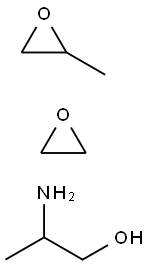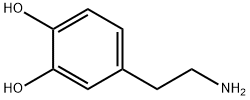Poly(propylene glycol) bis(2-aminopropyl ether)
- CAS NO.:9046-10-0
- Empirical Formula: CH3CH(NH2)CH2[OCH2CH(CH3)]nNH2
- Molecular Weight: 0
- MDL number: MFCD00082259
- EINECS: 618-561-0
- SAFETY DATA SHEET (SDS)
- Update Date: 2024-12-18 14:07:02
What is Poly(propylene glycol) bis(2-aminopropyl ether)?
Description
Amine-TerminatedPolyether (ATPE) is a class of polyolefin compounds with a soft polyether backbone, capped by primary or secondary amine groups. Because the main chain of the molecule is a soft polyether chain, and the hydrogen on the terminal of polyether amine is more active than the hydrogen on the terminal hydroxyl group of polyether, therefore, polyether amine can be a good substitute for polyether in some material processes, and can improve the application performance of new materials. They are widely used in polyurethane reactive injection molding materials, polyurea spraying, epoxy resin curing agents and gasoline scavengers.
Chemical properties
Poly(propylene glycol) bis(2-aminopropyl ether) is a light yellow or colorless transparent liquid at room temperature, with the advantages of low viscosity, low vapor pressure and high primary amine content, and is soluble in solvents such as ethanol, aliphatic hydrocarbons, aromatic hydrocarbons, esters, glycol ethers, ketones and water.
The Uses of Poly(propylene glycol) bis(2-aminopropyl ether)
Poly(propylene glycol) bis(2-aminopropyl ether) have good alkali and water resistance and moderate acid resistance. Epoxy resins cured with polyetheramines have good electrical properties. Polyetheramines have unique properties and are used in almost all epoxy applications such as coatings, potting materials, construction materials, composites and adhesives.
Preparation
synthesis of Poly(propylene glycol) bis(2-aminopropyl ether): Firstly, the polyether is attached to the acetoacetate group at both ends by dienone or through the ester exchange reaction of ethyl acetoacetate with polyether polyol, and then the polyether capped by the acetoacetate group is aminated with a mono-primary amine, alkyl alcohol amine or dibasic primary amine to obtain an imine compound with a low viscosity with an aminobutyrate end group.
Flammability and Explosibility
Not classified
Properties of Poly(propylene glycol) bis(2-aminopropyl ether)
| Boiling point: | 232℃[at 101 325 Pa] |
| Density | 0.997 g/mL at 25 °C |
| vapor pressure | 90Pa at 20℃ |
| refractive index | n |
| RTECS | TR3702500 |
| Flash point: | >230 °F |
| pka | 9.3[at 20 ℃] |
| Water Solubility | 100g/L at 20℃ |
| EPA Substance Registry System | Polypropylene glycol bis(aminopropyl) ether (9046-10-0) |
Safety information for Poly(propylene glycol) bis(2-aminopropyl ether)
| Signal word | Danger |
| Pictogram(s) |
 Corrosion Corrosives GHS05  Exclamation Mark Irritant GHS07 |
| GHS Hazard Statements |
H314:Skin corrosion/irritation H412:Hazardous to the aquatic environment, long-term hazard |
| Precautionary Statement Codes |
P273:Avoid release to the environment. P280:Wear protective gloves/protective clothing/eye protection/face protection. P310:Immediately call a POISON CENTER or doctor/physician. P305+P351+P338:IF IN EYES: Rinse cautiously with water for several minutes. Remove contact lenses, if present and easy to do. Continuerinsing. |
Computed Descriptors for Poly(propylene glycol) bis(2-aminopropyl ether)
New Products
(S)-3-Aminobutanenitrile hydrochloride 4-Methylphenylacetic acid N-Boc-D-alaninol N-BOC-D/L-ALANINOL Tert-butyl bis(2-chloroethyl)carbamate N-octanoyl benzotriazole 3-Morpholino-1-(4-nitrophenyl)-5,6-dihydropyridin- 2(1H)-one Furan-2,5-Dicarboxylic Acid S-2-CHLORO PROPIONIC ACID ETHYL ISOCYANOACETATE 2-Bromo-1,3-Bis(Dimethylamino)Trimethinium Hexafluorophosphate 4-IODO BENZOIC ACID 3-NITRO-2-METHYL ANILINE 1-(2,4-DICHLOROPHENYL) ETHANAMINE (2-Hydroxyphenyl)acetonitrile 4-Bromopyrazole 5,6-Dimethoxyindanone 2-(Cyanocyclohexyl)acetic acid 4-methoxy-3,5-dinitropyridine 1-(4-(aminomethyl)benzyl)urea hydrochloride 2-aminopropyl benzoate hydrochloride diethyl 2-(2-((tertbutoxycarbonyl)amino) ethyl)malonate tert-butyl 4- (ureidomethyl)benzylcarbamate Ethyl-2-chloro((4-methoxyphenyl)hydrazono)acetateRelated products of tetrahydrofuran




![TRIMETHYLOLPROPANE TRIS[POLY(PROPYLENE GLYCOL), AMINE TERMINATED] ETHER](https://img.chemicalbook.in/)



You may like
-
 Poly(propylene glycol) bis(2-aminopropyl ether) average Mn ~4,000 CAS 9046-10-0View Details
Poly(propylene glycol) bis(2-aminopropyl ether) average Mn ~4,000 CAS 9046-10-0View Details
9046-10-0 -
 Poly(propylene glycol) bis(2-aminopropyl ether) average Mn ~400 CAS 9046-10-0View Details
Poly(propylene glycol) bis(2-aminopropyl ether) average Mn ~400 CAS 9046-10-0View Details
9046-10-0 -
 Poly(propylene glycol) bis(2-aminopropyl ether) average Mn ~2,000 CAS 9046-10-0View Details
Poly(propylene glycol) bis(2-aminopropyl ether) average Mn ~2,000 CAS 9046-10-0View Details
9046-10-0 -
 Poly(propylene glycol) bis(2-aminopropyl ether) average Mn ~230 CAS 9046-10-0View Details
Poly(propylene glycol) bis(2-aminopropyl ether) average Mn ~230 CAS 9046-10-0View Details
9046-10-0 -
 JEFFAMINE D-230 CASView Details
JEFFAMINE D-230 CASView Details -
 Polyoxypropylenediamine CASView Details
Polyoxypropylenediamine CASView Details -
 Poly(propylene glycol) bis(2-aminopropyl ether) CAS 9046-10-0View Details
Poly(propylene glycol) bis(2-aminopropyl ether) CAS 9046-10-0View Details
9046-10-0 -
 Poly(propylene glycol) bis(2-aminopropyl ether) CAS 9046-10-0View Details
Poly(propylene glycol) bis(2-aminopropyl ether) CAS 9046-10-0View Details
9046-10-0